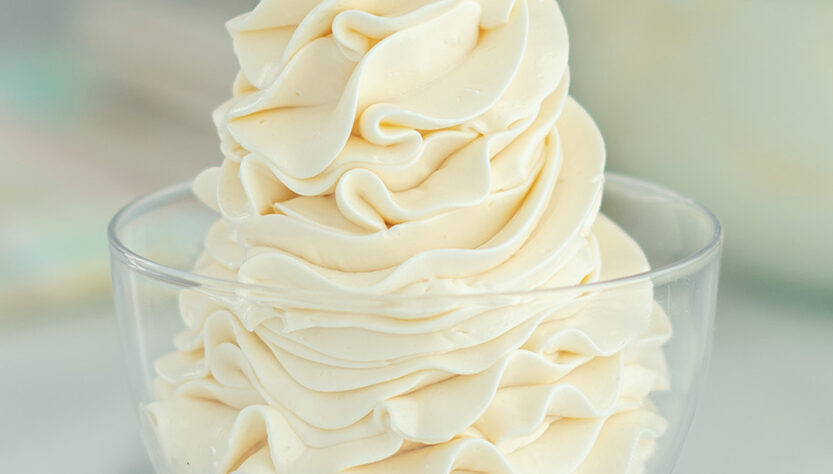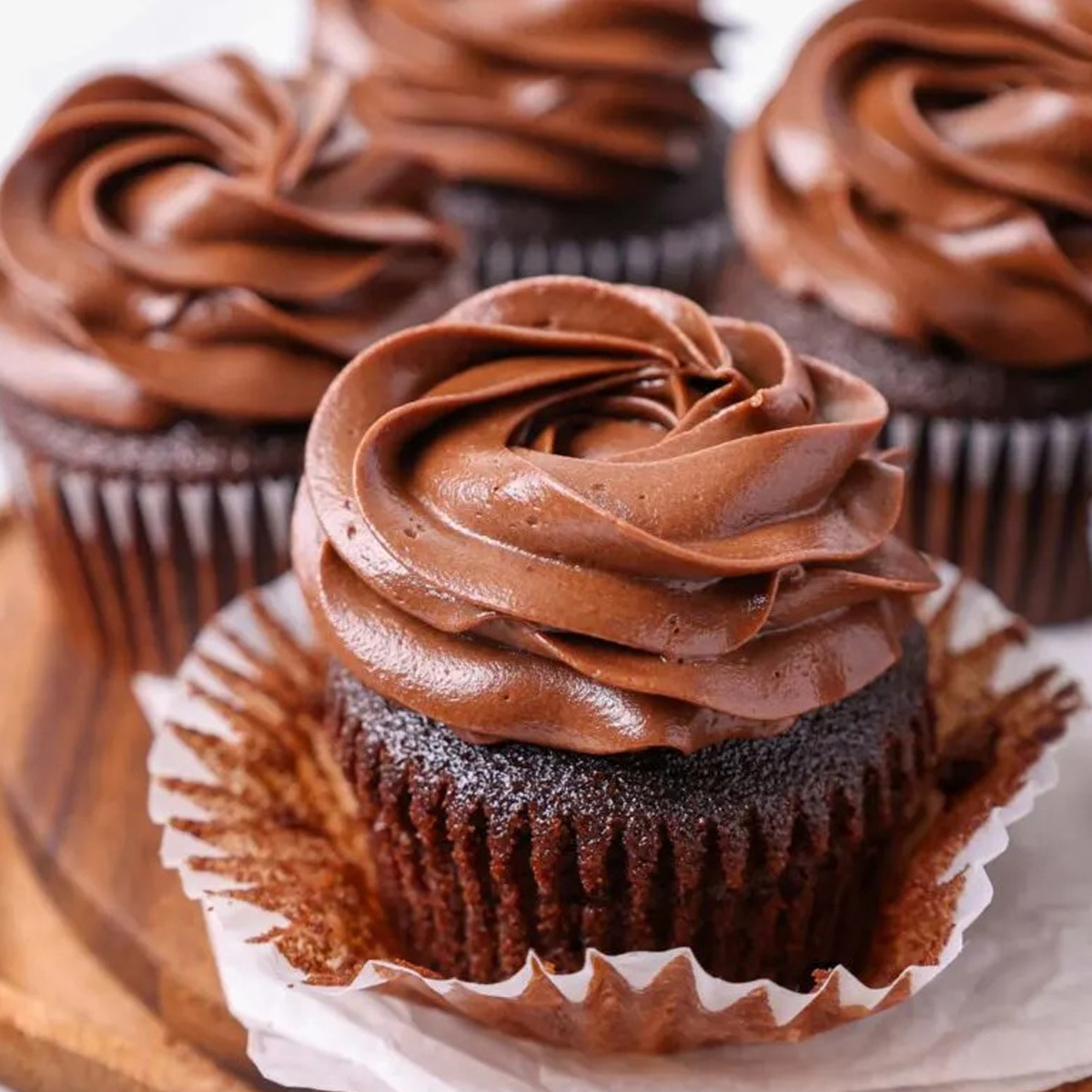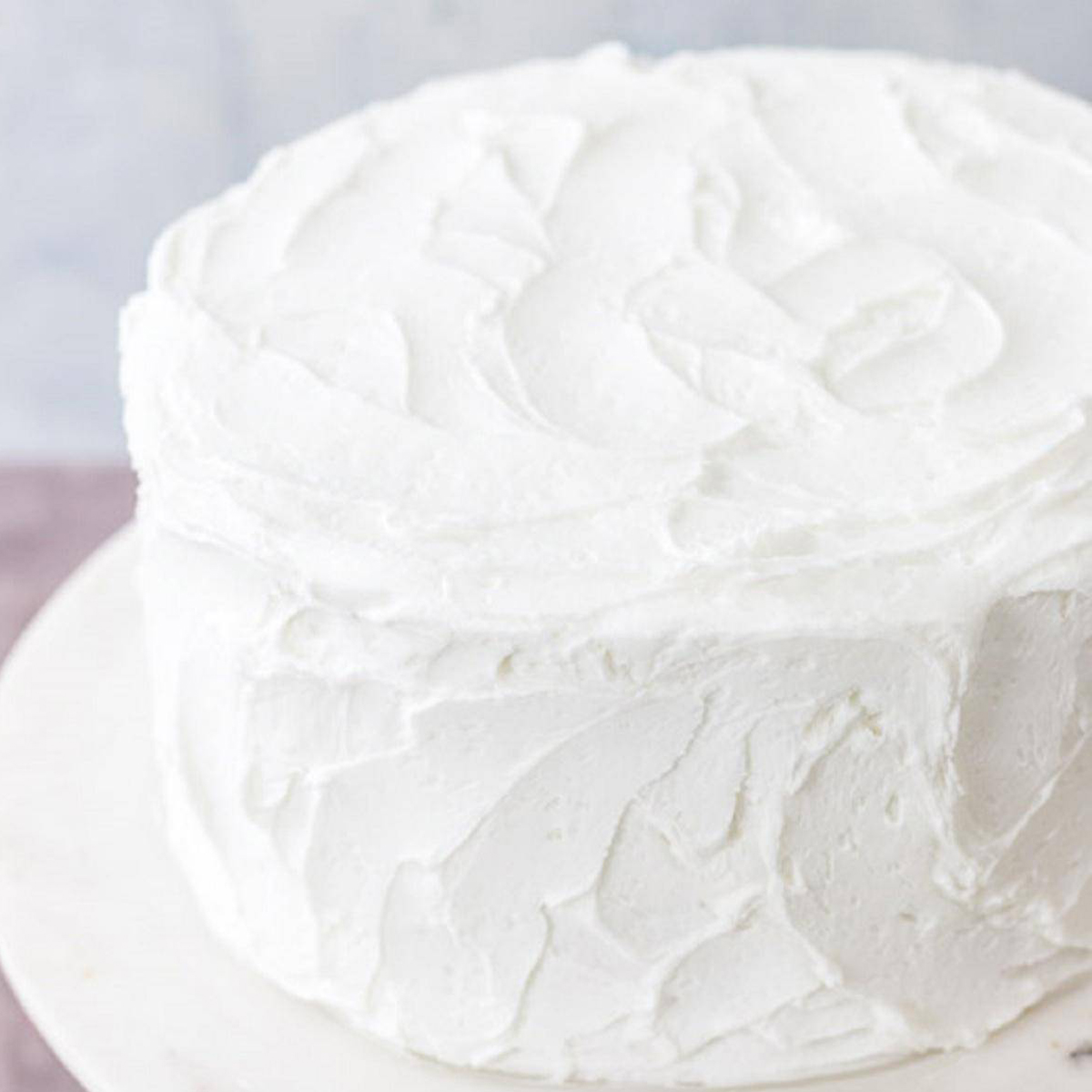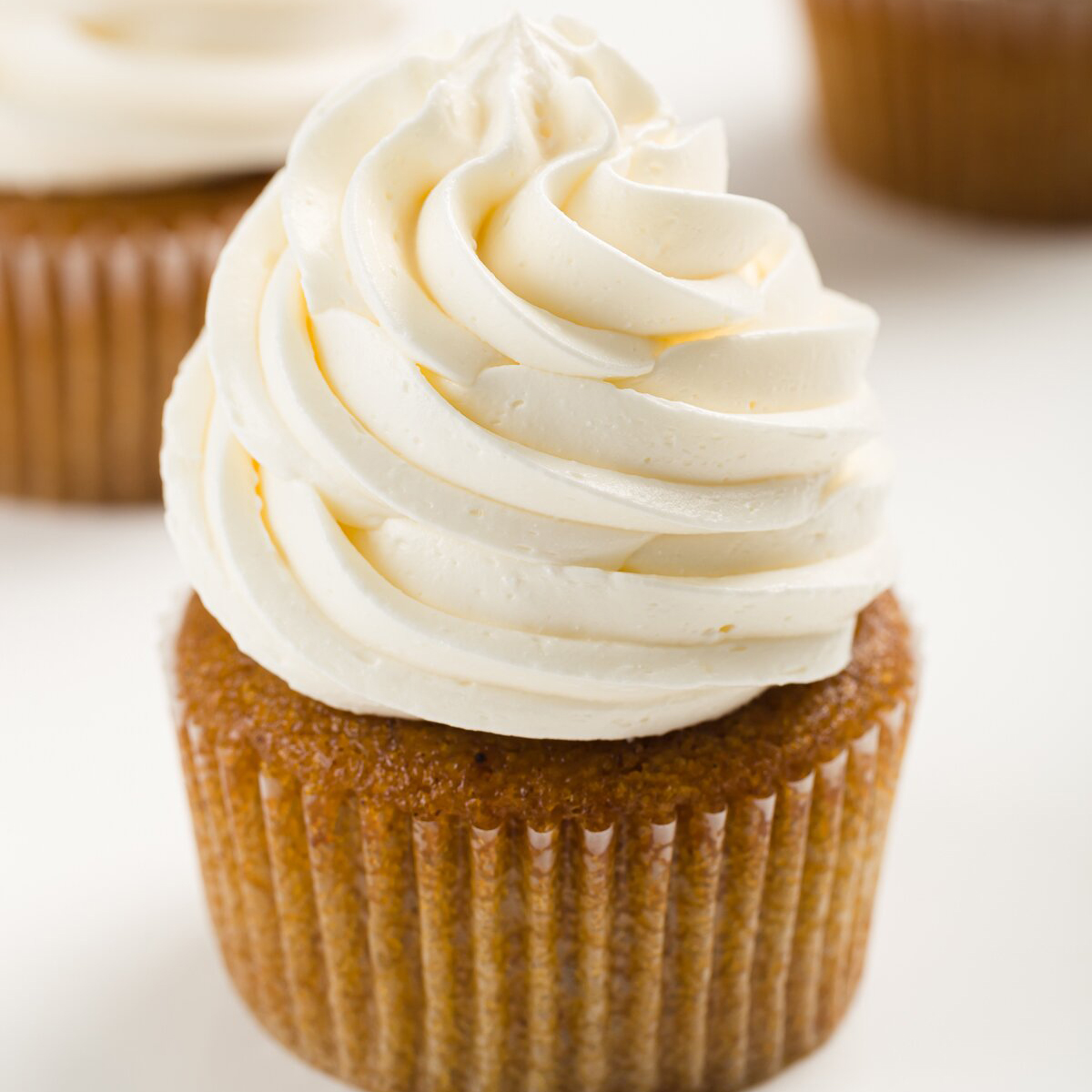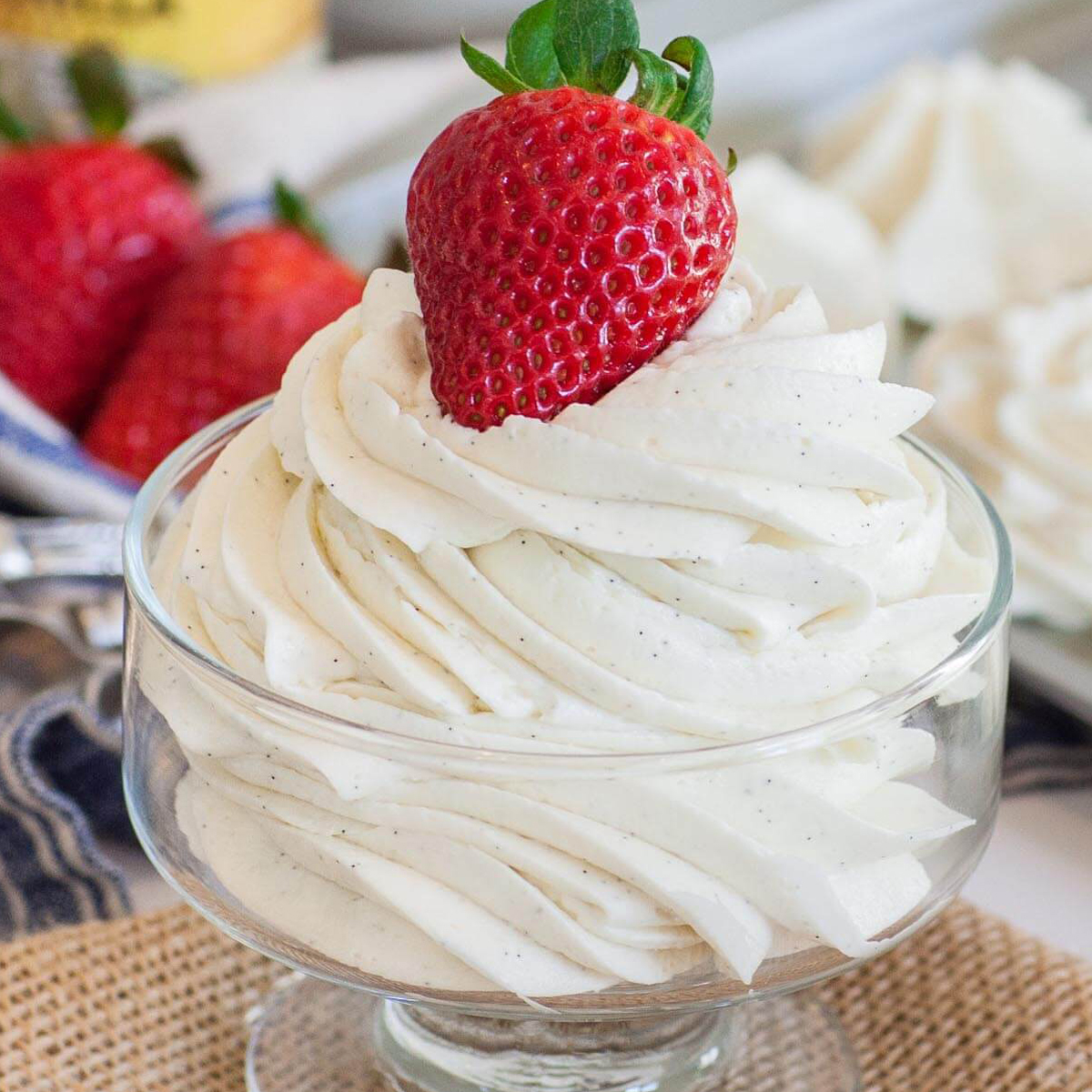Italian buttercream is a luscious and velvety frosting that’s renowned for its incredibly smooth texture and rich, buttery flavor. It’s a classic choice for cake decorators and pastry chefs alike, known for its versatility and ability to hold intricate designs beautifully. Unlike American buttercream, which primarily uses powdered sugar, Italian buttercream is made by whipping a hot sugar syrup into beaten egg whites, resulting in a stable and silky frosting that’s perfect for decorating cakes, cupcakes, and more. Whether you’re looking to create elegant wedding cakes or simply want to elevate your homemade treats, Italian buttercream is a frosting that’s sure to impress both in taste and appearance.

What Is Italian buttercream?
Italian buttercream is a classic frosting used in baking and cake decorating. It’s known for its smooth, silky texture and rich, buttery flavor. What sets Italian buttercream apart from other types of buttercream, like American buttercream, is its preparation method.
Italian buttercream is made by whipping a hot sugar syrup into beaten egg whites, creating a meringue. Once the meringue has cooled, softened butter is gradually incorporated into the mixture, resulting in a creamy and stable frosting. This method gives Italian buttercream its luxurious texture and makes it ideal for decorating cakes and pastries.
Because of its smooth consistency, Italian buttercream is often used for intricate cake decorations, including piping flowers, borders, and other intricate designs. It can also be flavored with various extracts, melted chocolate, or fruit purees to create a wide range of flavors to complement different desserts.
Italian buttercream is a favorite among professional bakers and pastry chefs due to its versatility and ability to hold its shape, making it a go-to choice for elegant cakes and pastries.
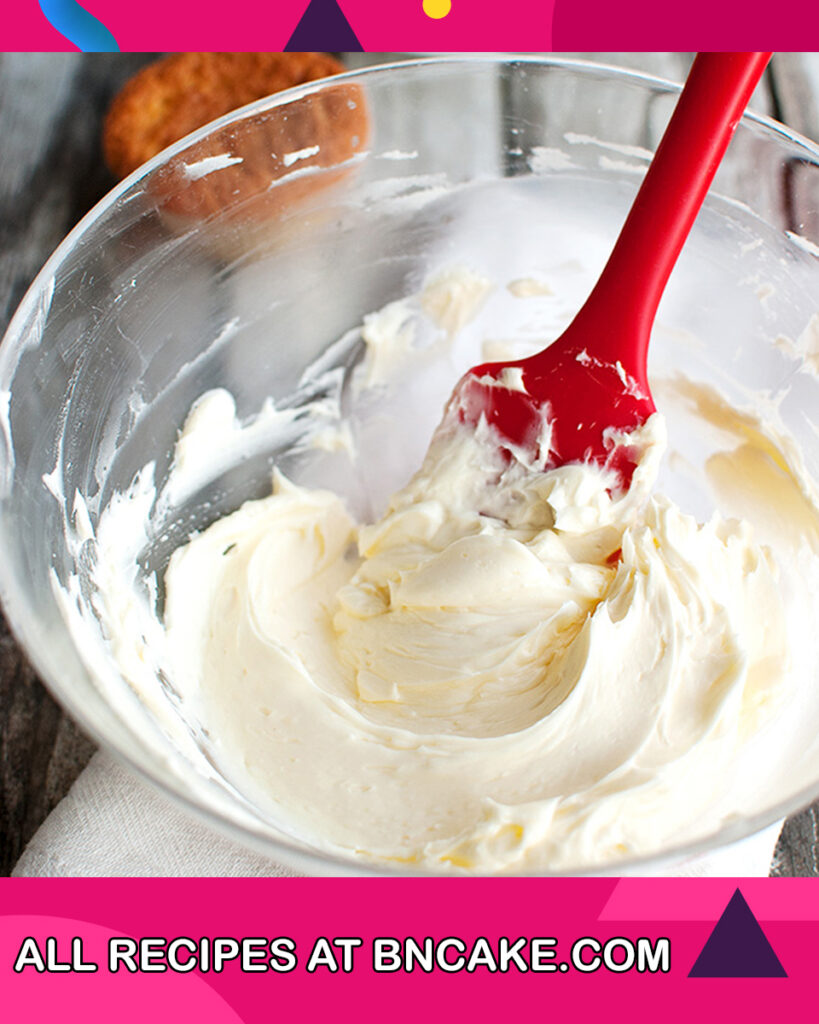
Why You Will Love Italian buttercream Recipe?
- Silky Smooth Texture: Italian buttercream has an incredibly smooth and velvety texture that glides effortlessly over cakes and cupcakes. It’s a pleasure to work with, whether you’re frosting a cake for a special occasion or piping intricate designs.
- Rich Butter Flavor: Italian buttercream has a luxurious, buttery taste that’s not overly sweet. It allows the flavor of your cake or dessert to shine while adding a delightful richness.
- Stability: This buttercream is highly stable and holds its shape well, even in warm weather. It’s perfect for decorating cakes for weddings and other events where precision is crucial.
- Versatility: You can easily flavor Italian buttercream with various extracts, chocolates, fruit purees, or liqueurs to create a wide range of flavors. This versatility allows you to match the frosting to your dessert.
- Professional Finish: Italian buttercream provides a professional and polished look to your baked creations. It’s the choice of many skilled cake decorators for its ability to create intricate designs and smooth surfaces.
- Longer Shelf Life: Italian buttercream has a longer shelf life compared to some other frostings because of its higher fat content and stable texture, making it a practical choice for both home bakers and professionals.
- Crowd-Pleasing: Its balanced sweetness and luxurious texture make Italian buttercream a crowd-pleaser. It’s an excellent choice for a wide range of desserts, from cupcakes to layer cakes to macarons.
- Customizable: You can adapt the flavor and color of Italian buttercream to match your dessert’s theme or your personal preferences, making it highly customizable.
In summary, Italian buttercream is beloved for its decadent texture, flavor, and versatility, making it the perfect choice for both novice and experienced bakers looking to create show-stopping desserts.

Ingredients For Italian buttercream
- 1 cup granulated sugar (approximately 200 grams)
- 1/4 cup water (approximately 60 milliliters)
- 4 large egg whites (room temperature)
- 1 1/2 cups unsalted butter (approximately 3 sticks or 340 grams), softened but still cool
- 1 teaspoon pure vanilla extract (or other flavorings of your choice)
- A pinch of salt (optional, to taste)
Note: These measurements yield approximately enough Italian buttercream to frost a two-layer 8-inch round cake. You can adjust the quantities based on your needs.
Keep in mind that Italian buttercream is known for its versatility, so you can customize it with different flavorings and colors to match your dessert’s theme or your personal preferences. This classic recipe provides the base for creating a silky, buttery frosting that’s perfect for decorating cakes and other sweet treats.
How To Make Italian buttercream
- Prepare Your Equipment: Ensure that your mixing bowl and beaters are clean and completely free of grease, as any fat residue can prevent the egg whites from whipping properly.
- Create a Sugar Syrup:
- In a small saucepan, combine the granulated sugar and water.
- Place the saucepan over medium heat and stir until the sugar dissolves.
- Once the sugar is dissolved, stop stirring and allow the mixture to come to a boil.
- Use a candy thermometer to monitor the temperature. You’re aiming for the syrup to reach the “soft ball stage,” which is around 240°F (115°C). This usually takes a few minutes.
- As soon as the syrup reaches the desired temperature, remove it from the heat to prevent it from cooking further.
- Whip the Egg Whites:
- While the sugar syrup is heating, start whipping the room temperature egg whites in a clean mixing bowl. Beat them until they reach stiff peaks.
- Pour the Hot Sugar Syrup:
- With the mixer running on low speed, slowly pour the hot sugar syrup into the whipped egg whites in a thin, steady stream. Aim to pour it between the side of the bowl and the beaters to avoid splattering.
- Continue to beat the mixture at medium-high speed until the bowl feels cool to the touch. This can take about 10-15 minutes.
- Incorporate the Butter:
- Once the meringue has cooled down, reduce the mixer speed to medium-low.
- Begin adding the softened, cool butter one tablespoon at a time. Allow each piece to incorporate before adding more.
- Continue to beat until the frosting is smooth and creamy. It might look curdled or soupy at some point, but keep beating; it will eventually come together.
- If the frosting remains soupy, it could be too warm. Place the bowl in the refrigerator for about 15-20 minutes and then continue to beat until it reaches the desired consistency.
- Add Flavorings:
- Finally, add the vanilla extract (or any other flavorings you prefer) and a pinch of salt (if desired). Beat until well incorporated.
- Use or Store:
- Your Italian buttercream is ready to use for frosting cakes, cupcakes, or other desserts. It pipes beautifully and can hold intricate designs.
- If you’re not using it immediately, cover the buttercream with plastic wrap pressed directly against the surface to prevent it from forming a crust. You can store it in the refrigerator for a few days or freeze it for longer storage.
Enjoy your homemade Italian buttercream!
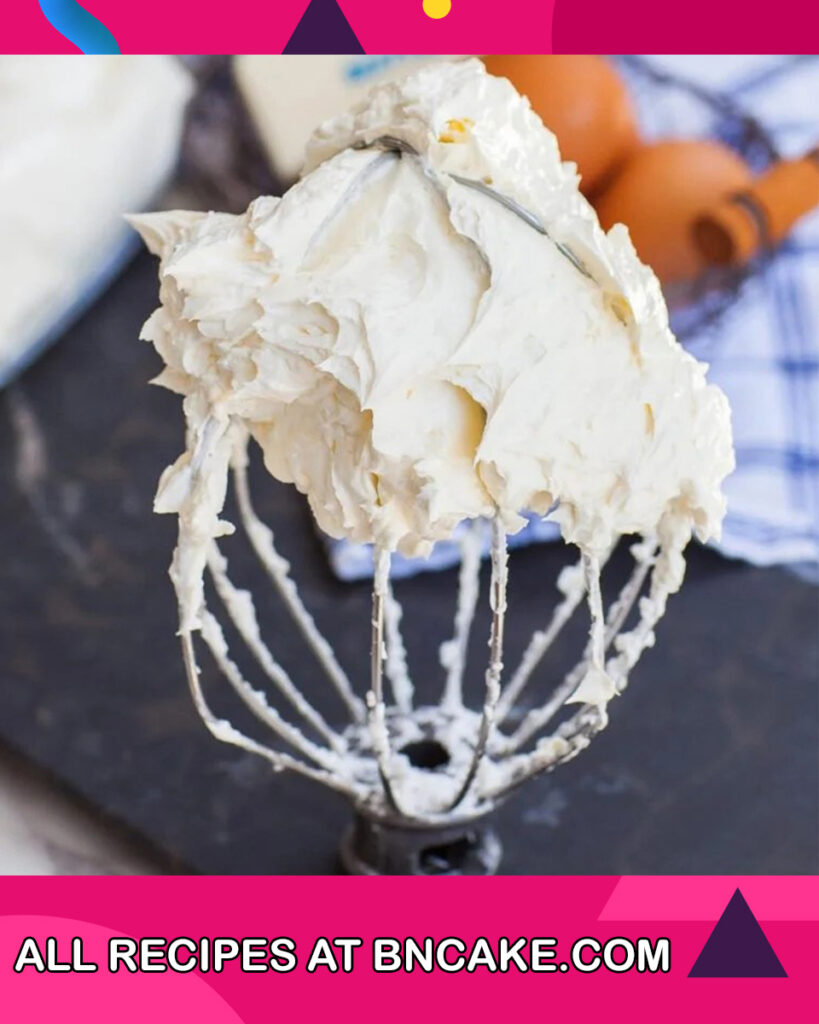
How To Serve Italian buttercream
Italian buttercream is a versatile frosting that can elevate a wide range of desserts. Here’s how to serve Italian buttercream:
- Frosting Cakes: Italian buttercream is commonly used to frost cakes. It creates a smooth and luxurious finish. To frost a cake with Italian buttercream, start by applying a thin layer of frosting (a “crumb coat”) to seal in any loose crumbs. Then, refrigerate the cake briefly to set the crumb coat. Afterward, apply a thicker layer of Italian buttercream for a flawless finish. You can use a spatula or piping bag to create different decorative patterns.
- Decorating Cupcakes: Italian buttercream is ideal for decorating cupcakes. You can pipe it into beautiful swirls, rosettes, or other decorative designs on top of your cupcakes. It adds both flavor and elegance to your treats.
- Filling Pastries: Italian buttercream can be used as a filling for pastries, such as cream puffs, éclairs, or macarons. It adds a creamy and luscious center to these desserts.
- Topping Pies: Some pies, like lemon meringue or chocolate cream pie, can be topped with Italian buttercream for an extra layer of flavor and decoration.
- Layering Desserts: Italian buttercream can be used to create layered desserts like parfaits. Simply alternate layers of the frosting with cake, cookies, or other sweet components for a delightful dessert.
- As a Dip: Italian buttercream can be served as a dip alongside fresh fruits, marshmallows, or cookies for a sweet fondue-style treat.
- Flavor Variations: Experiment with different flavorings and colors to match the theme or taste preferences of your dessert. You can add extracts like almond, lemon, or coffee, or incorporate fruit purees or melted chocolate to create unique variations.
Remember that Italian buttercream has a rich and buttery flavor, so it pairs wonderfully with a wide range of cake flavors and desserts. It not only enhances the taste but also provides a luxurious and professional finish to your sweet creations.

How To Store Italian buttercream
Storing Italian buttercream properly is essential to maintain its texture and quality. Here’s how to store Italian buttercream:
Short-term Storage (Refrigeration):
- Transfer the Italian buttercream to an airtight container or a bowl with a tight-fitting lid. Make sure there is minimal air contact with the surface of the frosting to prevent it from developing a crust.
- If you have used any flavorings or colorings, label the container to identify the type of buttercream and the date you made it.
- Seal the container well and place it in the refrigerator. Italian buttercream can be stored in the refrigerator for up to 3-5 days.
Long-term Storage (Freezing):
- If you want to store Italian buttercream for an extended period, freezing is a good option. It can be frozen for several weeks without compromising its quality.
- Transfer the buttercream to an airtight container or a resealable freezer bag. Ensure that you remove as much air as possible to prevent freezer burn.
- Label the container or bag with the type of buttercream and the date of freezing.
- Lay the container or bag flat in the freezer to allow it to freeze evenly. Once it’s frozen solid, you can store it vertically or stack it with other items.
Thawing and Reusing:
- When you’re ready to use the frozen Italian buttercream, transfer it to the refrigerator and let it thaw slowly overnight. This gradual thawing will help maintain its smooth texture.
- Once thawed, bring the buttercream to room temperature, which may take a few hours. Do not rush this process by using heat, as it can cause the frosting to become too soft or even melt.
- Give the buttercream a good stir or re-whip it with an electric mixer to restore its creamy consistency before using it for frosting or decorating.
Important Tips:
- Never refreeze Italian buttercream that has been thawed.
- If you notice any separation or curdling after thawing, re-whip the buttercream to bring it back to its desired texture. It should become smooth and creamy again with some mixing.
Properly stored and thawed Italian buttercream can be used for frosting cakes and other desserts just like freshly made buttercream. It’s a convenient way to have a supply of frosting ready for your baking and decorating needs.
IF YOU LOVE THIS RECIPE TRY THESE OUT!
Tips And Tricks For Italian buttercream
Creating a perfect Italian buttercream requires some skill and attention to detail. Here are some tips and tricks to help you achieve the best results:
- Use Fresh Ingredients: Start with fresh eggs and high-quality butter. Fresh eggs will create a more stable meringue, and quality butter ensures a rich and delicious buttercream.
- Room Temperature Ingredients: Allow the egg whites and butter to come to room temperature before starting. Cold ingredients can lead to separation or curdling.
- Clean Utensils: Ensure that your mixing bowl, beaters, and utensils are clean and free from any grease or residue. Even a small amount of fat can affect the stability of the meringue.
- Gradual Sugar Addition: When making the sugar syrup, add the granulated sugar to the water in a slow, steady stream, and avoid splashing sugar on the sides of the pot. This helps prevent crystallization.
- Use a Candy Thermometer: Using a candy thermometer to monitor the temperature of the sugar syrup is crucial. It should reach 240°F (115°C) to create a stable meringue.
- Stiff Peaks: Beat the egg whites until they reach stiff peaks. This means that when you lift the beaters, the peaks of egg whites should stand upright and hold their shape.
- Cooling Syrup: Allow the sugar syrup to cool slightly before pouring it into the egg whites. Pouring hot syrup directly onto the egg whites can cause them to deflate.
- Consistency Check: After adding the butter, the mixture may look soupy or curdled at first. Continue beating until it comes together into a smooth and creamy buttercream. If it remains soupy, it may be too warm, so refrigerate it briefly and then continue whipping.
- Flavoring Variations: Experiment with different flavorings to create variations of Italian buttercream. Add extracts like vanilla, almond, or citrus zest, or incorporate fruit purees, melted chocolate, or coffee for unique flavors.
- Coloring: If you want to color the buttercream, use gel food coloring for vibrant and consistent results. Add it sparingly and gradually until you achieve the desired color.
- Storage: Store Italian buttercream properly to prevent drying or separation. See the storage instructions mentioned earlier for both short-term and long-term storage.
- Re-Whip as Needed: If your buttercream becomes too soft or separates after storage or transportation, you can re-whip it. Beat it with an electric mixer until it regains its smooth and creamy consistency.
Italian buttercream is a versatile and luxurious frosting that can elevate your cakes and desserts. With practice and attention to these tips, you’ll master the art of making Italian buttercream and create beautifully frosted treats every time.

FAQs And Troubleshooting
FAQs About Italian Buttercream:
- Can I make Italian buttercream without a candy thermometer?
It’s highly recommended to use a candy thermometer when making Italian buttercream to ensure the sugar syrup reaches the correct temperature (240°F or 115°C). Without it, you risk overcooking or undercooking the syrup, which can affect the stability of the meringue. - Why is my Italian buttercream too soft or runny?
If your buttercream is too soft or runny after adding the butter, it may be due to one of the following reasons:
- The butter was too soft when added. Ensure it’s softened but still cool to the touch.
- The meringue was too warm when you added the butter. Allow the meringue to cool further before incorporating the butter.
- Overmixing can also cause the buttercream to become too soft. Beat it just until it comes together.
- Can I flavor Italian buttercream with extracts or other flavorings?
Yes, Italian buttercream is highly customizable. You can add extracts like vanilla, almond, or citrus for flavor. You can also incorporate fruit purees, melted chocolate, coffee, or other flavorings to create unique variations. - How do I fix curdled Italian buttercream?
If your buttercream becomes curdled or separated during the mixing process, continue to beat it. It may look soupy initially, but with continued whipping, it should come back together into a smooth and creamy consistency. If it remains soupy, it might be too warm, so refrigerate it briefly and then continue whipping.
Troubleshooting Italian Buttercream Issues:
- Grainy Texture: If your Italian buttercream has a grainy texture, it could be due to crystallized sugar in the syrup. To prevent this, ensure that the sugar is fully dissolved when making the syrup, and avoid stirring it once it starts boiling.
- Too Sweet: If your buttercream is too sweet for your taste, you can balance the sweetness by adding a pinch of salt and additional flavorings like lemon juice or zest.
- Yellow Tint: Sometimes, Italian buttercream can take on a yellowish tint. This can be due to the color of the egg yolks or the type of butter used. To prevent this, use unsalted butter, and consider using egg whites only for a whiter result.
- Air Bubbles: If your buttercream has air bubbles, you can eliminate them by gently tapping the bowl of frosting on the countertop and using a spatula to smooth the surface.
- Overbeating: Overbeating Italian buttercream can cause it to become too stiff and lose its creamy texture. If this happens, you can try adding a small amount of softened butter and gently mixing until it returns to the desired consistency.
Remember that practice makes perfect when it comes to Italian buttercream. Don’t be discouraged by initial challenges; with experience, you’ll become more skilled at making this delightful frosting.
Nutrition Information
Italian buttercream is a rich and creamy frosting primarily made from butter and sugar. Its nutritional content is quite high in calories and fat due to the butter and sugar content. Here’s a general approximation of the nutrition information for Italian buttercream per 2-tablespoon (about 30 grams) serving:
Calories: 130-140 calories, Total Fat: 12-14 grams, Saturated Fat: 7-8 grams, Cholesterol: 30-35 milligrams, Sodium: 15-20 milligrams, Total Carbohydrates: 6-7 grams, Sugars: 6-7 grams, Protein: 0 grams
Please note that these values can vary depending on the specific recipe and the quantity of ingredients used. Additionally, Italian buttercream is a frosting used to decorate cakes and pastries, so the serving size can vary based on how it’s used. It’s a treat best enjoyed in moderation due to its high calorie and fat content.

